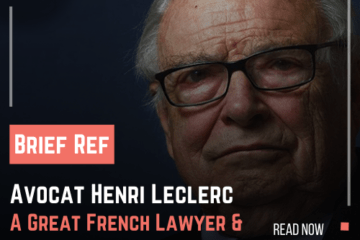
- Background of Hassan Nasrallah
- Hezbollah’s Role Under Nasrallah
- Nasrallah’s Death
- Immediate Impact on Hezbollah
- Reactions from Allies and Regional Powers
- Potential for Escalation
- Hezbollah’s Future Without Nasrallah
- The Formation of Hezbollah and Nasrallah’s Rise to Power
- Hezbollah Under Nasrallah: Expansion and Militarization
- Nasrallah’s Death: A Blow to Hezbollah
- Impact on Hezbollah’s Organizational Structure
- Hezbollah’s Regional Alliances and Iran’s Role
- Regional Geopolitical Implications
- A New Era for Hezbollah
Background of Hassan Nasrallah

Hassan Nasrallah, born in 1960, led the Lebanese Shia militant group Hezbollah from 1992 until his death in September 2024. His rise to leadership followed the assassination of Abbas al-Musawi, the previous secretary-general. Nasrallah transformed Hezbollah from a relatively small militia into one of the most powerful non-state actors in the world, gaining significant political and military influence, not only in Lebanon but also across the Middle East. Under his command, Hezbollah acquired sophisticated weaponry and developed close ties with Iran, which played a pivotal role in its growth and sustainability
Hezbollah’s Role Under Nasrallah
Hezbollah, founded in 1982 with Iranian support, was initially created to resist Israeli occupation in Lebanon. Nasrallah led the group through several significant conflicts with Israel, including the 2006 Lebanon War, which solidified his reputation as a fierce and strategic leader. He also played a key role in regional politics, aligning Hezbollah with the Iranian axis and intervening in the Syrian Civil War to support the Assad regime. Over his 32 years in leadership, Nasrallah helped establish Hezbollah as a dominant force in Lebanon’s political landscape, while also overseeing a military buildup that made Hezbollah more powerful than the Lebanese Army
Nasrallah’s Death
On September 27, 2024, Nasrallah was killed in an Israeli airstrike targeting Hezbollah’s command center in southern Beirut. The strike was part of a broader Israeli campaign that intensified following Hezbollah’s engagement in the October 2023 conflict between Hamas and Israel. The attack also killed several top Hezbollah commanders and destroyed key infrastructure. The Israeli Defense Forces (IDF) used advanced bunker-busting munitions in a strike that significantly impacted Hezbollah’s command and operational capabilities
People share their thoughts on X:
Another Said:
Immediate Impact on Hezbollah
Nasrallah’s death left Hezbollah in a precarious situation. The loss of its longstanding leader, who held a symbolic and strategic role, disrupted its organizational structure. With key military and political figures killed alongside Nasrallah, Hezbollah’s capacity to mount a coordinated response was significantly weakened. Experts have noted that the group’s ability to manage its extensive military operations could be compromised without a clear successor
Reactions from Allies and Regional Powers
Following Nasrallah’s death, Hezbollah’s allies, particularly Iran, pledged their continued support. Iranian Supreme Leader Ayatollah Ali Khamenei emphasized the importance of Hezbollah in the “resistance” against Israel, and Iranian media outlets mourned Nasrallah as a martyr. In Lebanon, Hezbollah supporters expressed grief, and posters proclaiming “Hezbollah lives” appeared in cities like Tehran. The group’s broader network of allies across the region, including Syria and other Shia militia groups, also expressed solidarity
Potential for Escalation
The death of Nasrallah carries the risk of escalating the already volatile situation in the region. Israel’s targeted killing of such a high-profile figure is likely to provoke a response from Hezbollah and its allies, though it remains unclear whether the organization is in a position to retaliate effectively. Some analysts have suggested that Hezbollah’s capabilities have been significantly diminished due to Israeli strikes on its weapons depots and command structures. However, there is fear that continued strikes could draw Iran more directly into the conflict, potentially sparking a wider regional war
Hezbollah’s Future Without Nasrallah
Hezbollah now faces a critical juncture. With the death of Nasrallah and the decimation of its leadership, the organization must grapple with the challenge of succession. Nasrallah’s strategic acumen and symbolic stature were pivotal to Hezbollah’s operations, and no clear successor has yet been identified. Some observers predict that Hezbollah could fragment or struggle to maintain its operational coherence in the near term, while others argue that Iran’s continued backing could allow the group to reconstitute its leadership. Either way, Nasrallah’s death marks the end of an era for Hezbollah, which will likely face internal and external pressures as it navigates its future
The Formation of Hezbollah and Nasrallah’s Rise to Power
Hezbollah was founded in 1982, largely in response to the Israeli invasion of Lebanon, with the support of Iran and the influence of the Islamic Revolutionary Guard Corps (IRGC). Its primary objective was to resist the Israeli occupation of southern Lebanon and promote Shia political power within Lebanon’s sectarian political system. Hassan Nasrallah joined Hezbollah in its early years, quickly rising through its ranks due to his leadership skills and ideological alignment with Iran’s vision for the region.
Nasrallah’s ascent to leadership came after the assassination of Abbas al-Musawi, Hezbollah’s secretary-general, in 1992. Nasrallah was just 32 when he assumed leadership, a decision that was initially met with skepticism due to his youth. However, his charismatic leadership and sharp political acumen quickly dispelled any doubts. Nasrallah not only consolidated his power within Hezbollah but also expanded the organization’s influence, particularly through its participation in the Lebanese political process
Hezbollah Under Nasrallah: Expansion and Militarization
During Nasrallah’s tenure, Hezbollah evolved from a small guerilla force into a significant political entity with a well-armed military wing. The group’s primary focus was resistance against Israel, culminating in the 2000 withdrawal of Israeli forces from southern Lebanon, which many Lebanese attribute to Hezbollah’s persistent attacks. This victory enhanced Nasrallah’s stature both within Lebanon and across the Arab world, where he was hailed as a hero of resistance.
Nasrallah was also a key figure during the 2006 Lebanon War, a 34-day conflict between Hezbollah and Israel that resulted in widespread destruction in Lebanon but further solidified Hezbollah’s reputation as a formidable military force. Despite the devastation, many Lebanese viewed the conflict as a victory for Hezbollah, as it managed to withstand the much larger Israeli military
Under Nasrallah’s leadership, Hezbollah also aligned itself more closely with Iran, both politically and militarily. Iran provided significant financial support and weaponry, allowing Hezbollah to amass a vast arsenal of rockets, anti-tank missiles, and sophisticated weaponry, making it one of the most powerful non-state actors in the world. Hezbollah’s influence extended beyond Lebanon’s borders, with the group playing a crucial role in the Syrian Civil War, fighting alongside Bashar al-Assad’s forces
Nasrallah’s Death: A Blow to Hezbollah
On September 27, 2024, Hassan Nasrallah was killed in an Israeli airstrike targeting Hezbollah’s command center in the Dahieh district of southern Beirut. The strike, which also killed several high-ranking Hezbollah commanders, was part of a broader Israeli operation aimed at crippling Hezbollah’s military capabilities. Nasrallah’s death was confirmed by both Hezbollah and the Israeli Defense Forces (IDF), marking a significant turning point in the longstanding conflict between Israel and Hezbollah
The airstrike, which used advanced bunker-buster bombs, targeted Hezbollah’s underground command centers, located beneath residential buildings in Beirut. The strike was part of a series of escalating Israeli operations aimed at neutralizing Hezbollah’s leadership and military infrastructure. The timing of the strike, shortly after Hezbollah’s involvement in the 2023 Hamas-Israel conflict, underscored Israel’s determination to weaken Hezbollah’s influence in the region
Impact on Hezbollah’s Organizational Structure
Nasrallah’s death has left a significant vacuum in Hezbollah’s leadership, raising questions about the group’s future direction and operational capacity. For over three decades, Nasrallah was not only Hezbollah’s top military strategist but also its ideological and symbolic figurehead. His ability to unite various factions within Hezbollah and maintain its cohesion was a crucial factor in the group’s longevity and success.
In the immediate aftermath of Nasrallah’s death, Hezbollah’s military and political structures have faced severe disruption. The airstrike also eliminated several other high-ranking commanders, further crippling the organization’s ability to respond quickly to Israeli military operations. While Hezbollah has vowed to continue its resistance against Israel, the loss of its leadership has raised concerns about internal fragmentation and reduced operational effectiveness
Analysts suggest that Hezbollah may struggle to find a successor with the same level of influence and strategic vision as Nasrallah. While the group is likely to remain a significant force in Lebanon, its ability to project power regionally may be diminished in the absence of Nasrallah’s leadership
Hezbollah’s Regional Alliances and Iran’s Role
One of the most immediate concerns following Nasrallah’s death is how Hezbollah’s key ally, Iran, will respond. Iran has been Hezbollah’s primary benefactor since its inception, providing financial, military, and political support. Nasrallah’s close relationship with the Iranian leadership, particularly with Ayatollah Ali Khamenei, was instrumental in solidifying Hezbollah’s position as a regional power.
In the wake of Nasrallah’s death, Iran has reaffirmed its support for Hezbollah, with Iranian leaders calling for continued resistance against Israel. Tehran’s response is critical to understanding Hezbollah’s future trajectory, as the group’s military and political viability are closely tied to Iranian backing. Iranian officials have emphasized that Hezbollah remains a vital component of the “axis of resistance,” which includes other Iranian-backed groups in Syria, Iraq, and Yemen
However, Nasrallah’s death could complicate Iran’s ability to manage Hezbollah effectively. Without Nasrallah’s unifying presence, Hezbollah may face internal divisions that could weaken its operational capacity. Iran’s influence within Hezbollah is likely to remain strong, but the group’s leadership transition will be a critical test of its resilience
Regional Geopolitical Implications
Nasrallah’s death is not just a significant event for Hezbollah; it has broader implications for the geopolitical landscape of the Middle East. Hezbollah has long been a key player in the region’s sectarian conflicts, particularly in the ongoing struggle between Iran and its regional rivals, including Israel and Saudi Arabia. Nasrallah’s death could escalate tensions between these powers, particularly if Hezbollah retaliates against Israel.
The death of Hezbollah’s leader also raises concerns about a broader regional conflict. Israel has made it clear that it views Hezbollah as a significant threat, particularly due to its large stockpile of rockets and its close ties to Iran. In the wake of Nasrallah’s death, Israeli military officials have warned of the possibility of further military action, including a ground invasion of southern Lebanon
Meanwhile, Hezbollah’s potential responses are uncertain. The group has vowed to continue its resistance against Israel, but its ability to do so effectively may be limited in the short term. Moreover, Nasrallah’s death could trigger a shift in Hezbollah’s strategy, with the group potentially focusing more on consolidating its political power within Lebanon rather than engaging in direct military conflict with Israel
A New Era for Hezbollah
The death of Hassan Nasrallah marks the end of an era for Hezbollah and the beginning of a new and uncertain chapter for the organization. Nasrallah’s leadership transformed Hezbollah into one of the most powerful non-state actors in the Middle East, with a formidable military presence and significant political influence. However, his death leaves a vacuum that will be difficult to fill, both in terms of leadership and strategic vision.
Hezbollah now faces the challenge of navigating a leadership transition while continuing to maintain its relevance in Lebanon and the broader region. The group’s future will depend on its ability to adapt to new leadership and the evolving geopolitical landscape, particularly its relationship with Iran and its position in the ongoing conflict with Israel. While Hezbollah has vowed to continue its resistance, Nasrallah’s death could mark a turning point that reshapes the organization’s role in the Middle East



